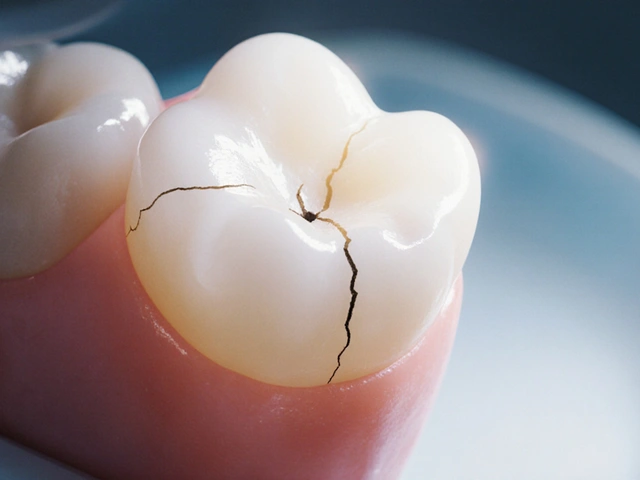Prasklá zubní sklovina: Co dělat, když se zub trhne a jak to zastavit
When you feel a sharp pain while biting into an apple or notice a thin line on your tooth, you might be dealing with a prasklá zubní sklovina, trhlina v tvrdé vnější vrstvě zubu, která se často neobjeví na rentgenovém snímku, ale může vést k vážným komplikacím. Also known as trhliny v zubech, it is more common than most people think – especially if you grind your teeth, chew ice, or have had large fillings. This isn’t just a cosmetic issue. Even a tiny crack can let bacteria sneak in, leading to infection, nerve damage, or even tooth loss if ignored.
What causes these cracks? It’s rarely one thing. poškození zubní skloviny, postupné opotřebení nebo náhlý náraz, který poškodí tenkou vrstvu zubu often happens because of habits you didn’t think were harmful – like using your teeth to open bottles, clenching at night, or eating hard candy. bolest zubů, náhlá citlivost na teplé, studené nebo sladké potraviny, která přetrvává i po přestání jíst is your body’s alarm bell. If your tooth hurts only for a second when you bite down, that’s a classic sign. And if the pain comes and goes, don’t wait until it gets worse – cracks grow deeper over time.
What you can do right now? Avoid chewing on that side. Rinse with warm salt water to reduce irritation. Don’t ignore it just because it doesn’t hurt all the time. The sooner you see a dentist, the better the chances of saving the tooth with a simple filling or crown. If it’s caught early, you might avoid root canals or extractions. And if you grind your teeth at night, a custom night guard can stop new cracks from forming. The posts below cover everything from how to spot early signs, what treatments actually work, why some home remedies make it worse, and how to protect your teeth long-term. You’ll find real advice from people who’ve been there – no fluff, no marketing, just what helps.
Jak vypadá kaz v zubu? Vizualizace prasklé zubní skloviny a její vývoj
Prasklá zubní sklovina je skrytý předzvěst kazů. Zjistěte, jak vypadá, jak se vyvíjí a proč ji nelze ignorovat. Naučte se rozpoznat první příznaky a jak ji lékař léčí.






